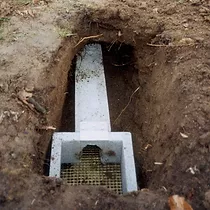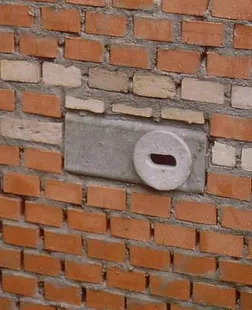Nest Boxes - Why do they matter?
- OVFAUK Guest Blogger
- Feb 1, 2022
- 5 min read
Updated: Feb 2, 2022
One Voice for Animals UK Guest Blog from Nestboxweek

Nest box week was set up by the British Trust for Ornithology (BTO) in 1997 to create more homes for birds in the UK.
British birds are short of nesting holes, and there are plenty of reasons why. Our gardens, parks and woodlands are neater and tidier than they used to be, depriving birds of natural holes to find a home. And to make matters worse there are fewer handy nooks and crannies in modern buildings. The populations of many bird species have declined as a result of this housing shortage, amongst other reasons.
The good news is that everyone can do their bit to help… and your own garden is a great place to start. Just imagine how our wild birds would benefit if each one of our gardens contained a nest box or two, plus plants and insects to provide food. Alongside common visitors – like Blue Tits, Great Tits, House Sparrows, Robins and Starlings – putting up a box will also boost your chance of attracting rarer species.
With all new builds and land management projects in any environment, next boxes should be part of the planning phase. These can be integrated into buildings when the architects are creating the buildings; incorporated in parks, gardens and other green spaces; and included in mitigation procedures if restructuring of rivers and lakes are needed.
Images show a sand martin nest being put into a restructured river bed; a swift nest box in a house; and a small holed box in green space.
What makes a good nest box?
It’s no surprise that shelter and security are the main hallmarks of a proper nest box. The best boxes are made from either wood or Woodcrete, a super-tough combination of sawdust and concrete. Both materials provide great insulation, ensuring that eggs and chicks don’t become too hot in the midday sun or too cold at night.
Making your own box
Most home made nest boxes are made from wood as it is easy to work with. The wood should be good quality timber (preferably hardwood, such as cedar, oak or beech that is from a sustainable source, either recycled or FSC approved. Make sure the wood comes from a renewable source. There’s no point improving the habitat for your local birds at the expense of even more endangered habitats elsewhere.
The wood itself should be at least 15mm thick to offer sufficient insulation and prevent warping. Ensure the hole is at least 120mm above the floor and that the box is large enough to accommodate your hand so that cleaning out nest material is easy to do. Wood that is exposed to the elements needs to be protected. Use a water-based preservative, normally sold for sheds and fences on the market.
Don't - put perches on the boxes as they become footholds for predators; incorporate a box with a bird table as the nesting pair may spend too much time defending their territory and the offspring will suffer.
The below images give the blueprints and handy tips on how to build your own boxes for open hole and small hole (click on the images to get more information).


When's the best time to put up a nest box?
Traditionally, boxes for tits and other small birds are put up in early spring before the new breeding season starts.
In reality, some species will already be hunting for nest sites long before this date. Juvenile birds may even begin to select potential sites during their first autumn and winter. Boxes that are in place by the autumn may well be used as roosting havens in extremely cold winter periods, so the best advice is to put up your box as soon as it’s ready.
Where's the best place to put it?
Give them some space: Nest boxes of the same type shouldn’t be sited too close together, as it can encourage aggressive behaviour between neighbours.
Shelter from the weather: Angle the front of the nest box vertically or slightly downwards to prevent rain from entering. Also make sure it’s sheltered from prevailing wind, rain and strong sunlight, usually Northerly or Easterly direction..
Obscure the view: Attach open-fronted boxes to a wall or fence that has shrubs and creepers growing against it.
Try trees, sheds or walls: Small-hole boxes are ideally placed 1-3m above the ground on tree trunks, but avoid sites where foliage obscures the entrance hole. If there are no trees in your garden, the next best option is placing your box on the side of a shed or wall.
Make sure cats can’t get in: Ensure the box is not easily accessible to predators like cats and squirrels.
Discourage squirrels: A metal plate around the entrance hole can deter squirrels from gaining access. These inexpensive plates are available from any good garden centre or bird care stockist.
Nest in peace: Don’t site nest boxes close to bird feeders. High levels of activity by visiting birds could disturb nesting pairs.
Combat corrosion: Use rust-free galvanised wire or stainless steel screws to attach the box to the trunk or hang it from a branch. Check fittings regularly to make sure the box remains securely attached.
Looking after your nest box
A little bit of routine maintenance can make all the difference in attracting birds to make a home in your garden.
1. Check all boxes before new breeding season
2. Repair any damaged boxes or replace them with new ones.
3. Remove old nests from boxes. This can be done between September and the end of January. It’s a wise idea to wear gloves and a dust mask while you’re doing it. A stiff bristled brush, such as an old toothbrush, is a useful tool for removing hardened debris from the box corners.
For tits you can start cleaning operations as soon as breeding is over; but bear in mind that other hole-nesting species like Sparrows may have a second or third brood in the same nest. Leave them alone until later in the autumn when it’s certain they are no longer in use. Don’t delay your clean-up for too long. If the weather turns cold, smaller birds may decide to roost in a nest box and even build a winter roosting 'nest' for extra warmth.
You may find that woodpeckers or squirrels have tried to enlarge the entrance hole to get at the nest box contents. If it’s a problem in your area, consider a specially designed metal plate to guard the entrance, available from any good garden centre or online bird care stockists such as livingwithbirds.com.
Which birds use nest boxes?
Birds have their own distinct preferences when it comes to choosing a nest box. Here are some of Britain's best known species, and the type of box they prefer.
Blue tits, Coal tits, Great Tits, House sparrow, Marsh tit, Nuthatch, Pied flycatcher, Redstart, Tree sparrow
Birds that prefer open fronted boxes: Robin, Spotted flycatcher, Pied wagtail
Birds needing a bigger entrance hole: great spotted woodpecker, starling
Large hole nesting birds: Jackdaw, stock dove, tawny owl
Special requirements: Kestrel, House Martin, Swallow, Barn owl, Swift
Don't forget nest boxes for other wildlife, including hedgehogs, dormice and bats.
If you would like more information on nest boxes for your garden or community projects or you can take a look on the British Trust for Ornithology's specially designed website https://www.nestboxweek.com/ or for more information on birds in general you can visit the BTOs website https://www.bto.org/.
One Voice for Animals UK has a rescue directory of almost 300 organisations that need support. If you enjoyed this blog, head over and find your local rescue and make a donation










Comments